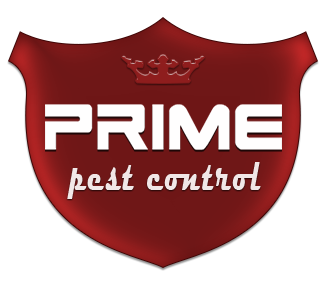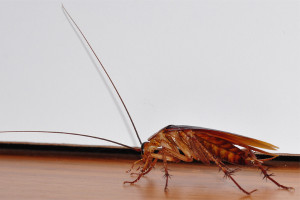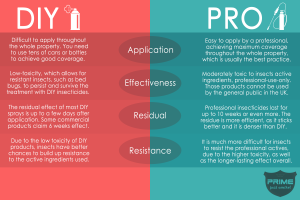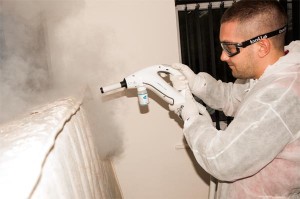Cockroach infestation
German cockroach (Blattella germanica)
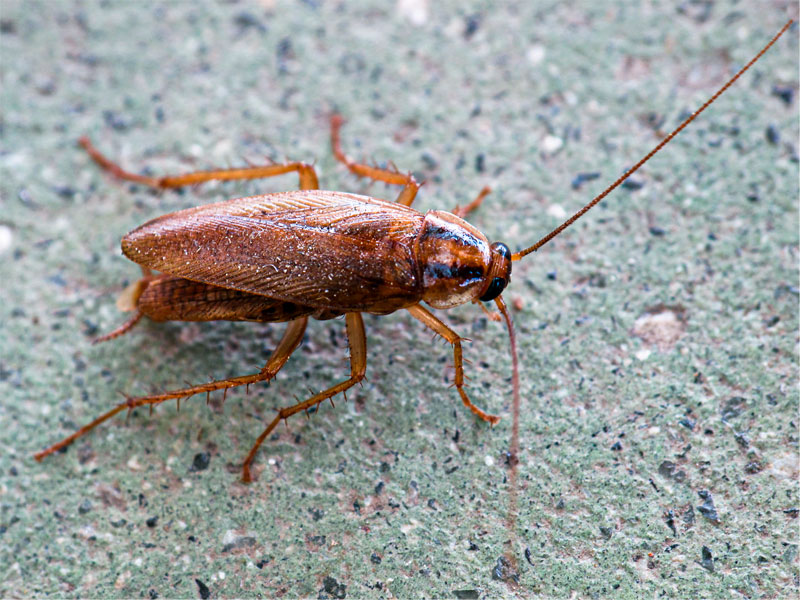
Cockroaches are one of the most resistant and tenacious insects in pest control. Cockroaches and their infestations pose serious risks to human health due to the fact that they carry and spread diseases such as Dysentery and Gastroenteritis, Salmonella and some respiratory allergic reactions. Their presence may aggravate people’s eczema and asthma conditions. In the UK, the most common species causing problems in domestic and commercial properties is the German cockroach. Unlike the German, its cousin the Oriental cockroach is seen very rarely in the UK.
These creatures are nocturnal and they come out to feed mostly at night, feeding on pretty much any food source or waste available, even fabrics, animal droppings, paper and glue. At day time cockroaches are very well hidden in all sorts of cracks and crevices, near sinks, drains, skirting boards, and behind or underneath white kitchen appliances. The ability of cockroaches to quickly reproduce and their resistance to commercial cockroach sprays makes these pests very hard to get rid of, without the use of expert products and professional pest control. Most cockroach species can crawl up walls, making it easy to spread around a whole building, even through the exterior of the building. Generally, the source of an infestation may be either internal or external to a building. Examples of internal source could be voids in the floor or the walls, heating or boiler rooms. External source could be food waste containers and skips near a building, bird nests on the roof.
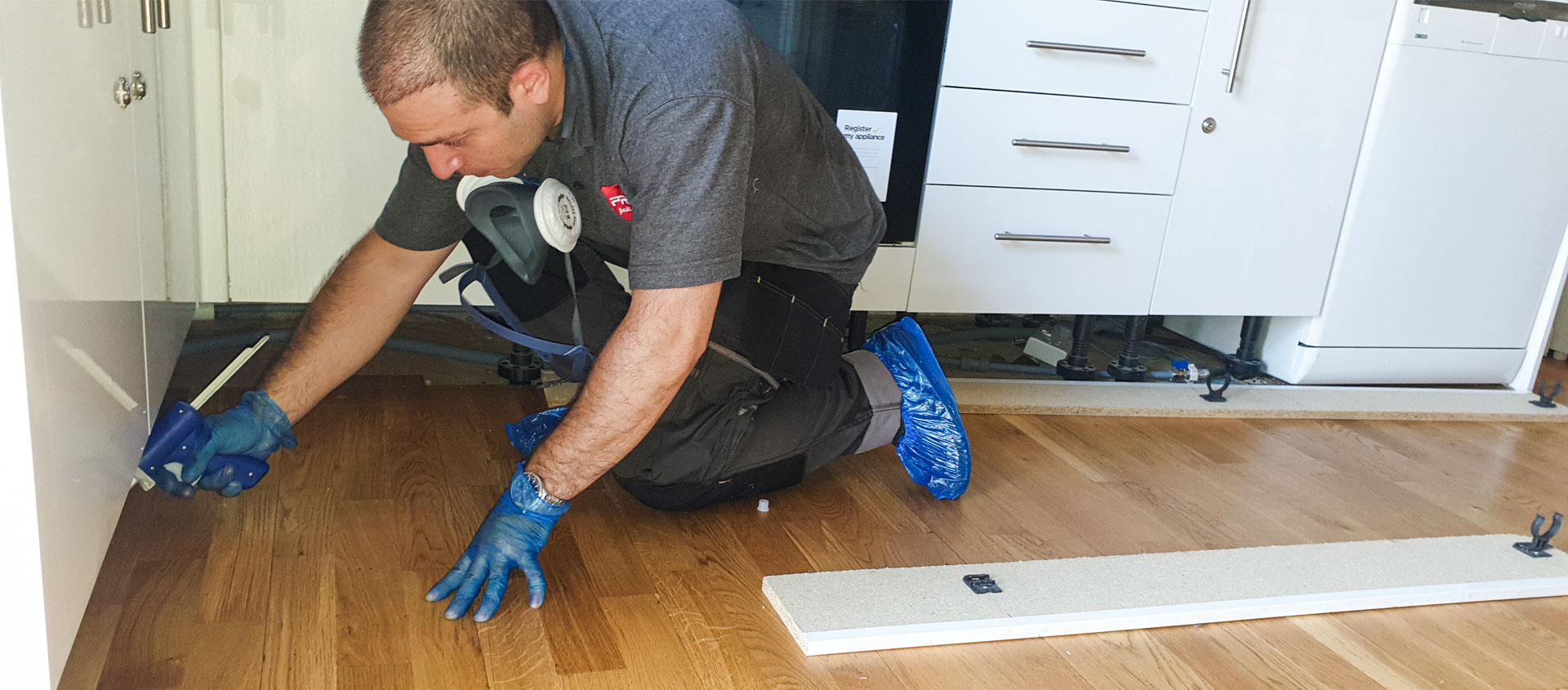
Cockroach control
Our cockroach extermination experts are extensively trained by the British Pest Control Association (BPCA) and have obtained a profound knowledge of cockroach pest control throughout the years of experience treating this pest. They have successfully eradicated hundreds of infestations with various levels and complexity across East, West, South, North London and all the surroundings. Our methods of cockroach removal and control usually involve proofing of the property, chemical and non-chemical treatments, as well as placing of traps and active monitors.
Prior to any kind of cockroach treatment, we carry out a thorough inspection and risk assessment, that allows our pest technicians to identify what could be the reason for the introduction and locate all possible hideouts and nests. As part of the inspection, sometimes, we may use sticky bait traps, that are left for a week or two, in order to detect and confirm the presence of an infestation. Then, our cockroach specialists will focus on the hiding spots, undertaking a targeted non-toxic steam treatment for instant extermination of the cockroaches or insecticide gel bait application. Depending on the level and complexity of the particular infestation, a pesticide spray type of treatment may follow, which will ensure long-lasting cockroach control. We also offer bespoke treatments with hot air achieving high success rates of extermination of all cockroach life stages with zero toxicity.
About Cockroaches
There are thousands of cockroach species that have been discovered and most are considered pests, as they may carry and transmit various diseases dangerous to human health. The most common cockroach species in the UK is the German (10-15 mm long, yellowish-brown) and the Oriental (20-24 mm long, dark brown to black in colour) cockroach. They are both nocturnal and during the day they hide in cracks and crevices, associated with drains, sinks, skirting boards and floors, white appliances and cupboards in the kitchen, as well as food skips. Cockroaches can feed on almost anything organic and sometimes even fabrics. This ancient pest is one of the toughest insects known and it could survive up to 3 months without food and a month without water. Interestingly enough, cockroaches feed on their own faeces, causing a secondary poisoning within the species, in case that they have been treated successfully with an insecticide.
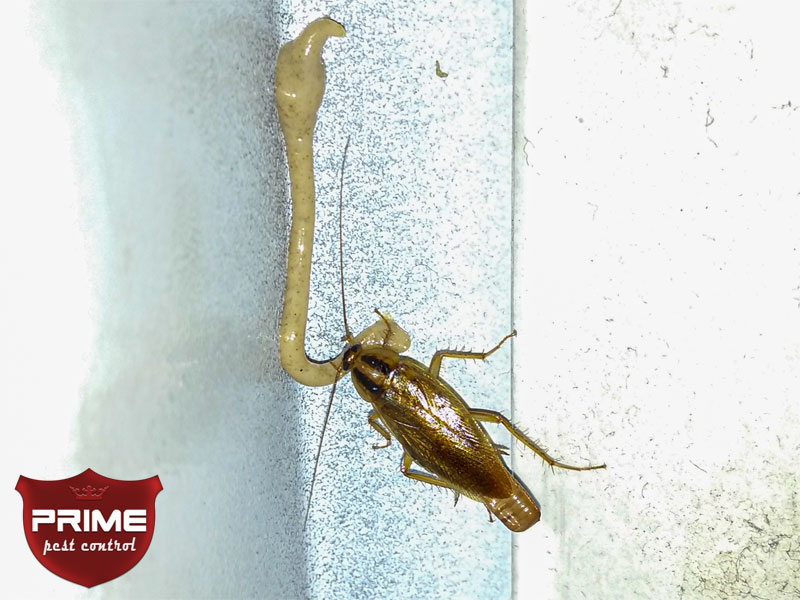
Cockroaches prefer to hide in areas with high levels of humidity and generally in places where water is available and cockroaches usually deposit faecal matter, containing pheromones, which attracts other cockroaches. Going through incomplete metamorphosis, they produce an egg capsule, also called “Ootheca”, (brown in colour), containing up to 18 eggs each for the Oriental and up to 40 eggs for the German cockroach. The eggs hatch between 6 and 12 weeks later, depending on the temperature conditions. The cockroach nymphs have to undergo moulting in order to mature, shedding their skin at each moulting stage. In ideal conditions, it takes around 50 days for the nymphs to become adult cockroaches, sometimes even up to 70 days.
The lifespan of the adult ones may vary from 6 to 18 months. Getting rid of cockroaches is a hard task to do even for professionals, not just because they are one of the most resilient and adaptable insects, but also because of the fact that their eggs are chemically resistant. The ootheca carrying the eggs may remain well-hidden for weeks before hatching. Therefore, the DIY cockroach methods and treatments show inefficient and are achieving only short-term results, in nearly all cases.
